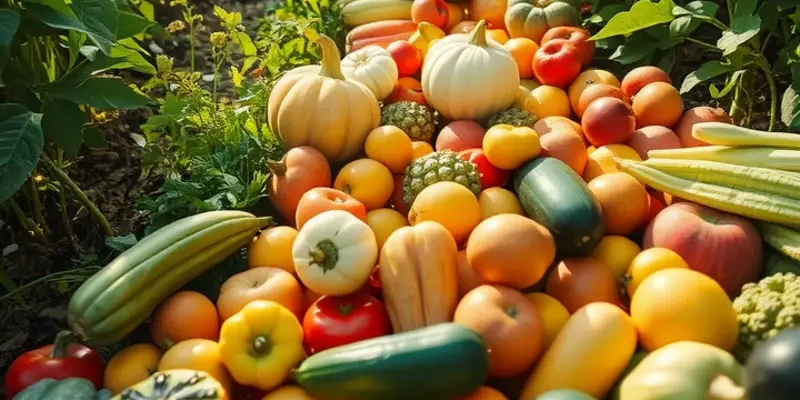Fruit flies can be a frustrating nuisance in any home, particularly for those who strive to minimize waste and store food safely. Understanding how to manage these pests effectively is key to maintaining a clean kitchen environment and ensuring that your food stays fresh for as long as possible. This guide will lay out simple strategies to help you prevent fruit flies, optimize food management, and enjoy a pest-free home.
Understanding the Fruit Fly Lifecycle and Attraction

Fruit flies, despite their tiny size, can quickly become a major nuisance in your kitchen. These pests are drawn to environments where they can thrive and reproduce, making understanding their lifecycle essential to managing and preventing infestations effectively.
A fruit fly’s lifecycle starts when females lay their eggs on the surface of fermenting or overripe fruit, or on moist films of organic material. Each female can lay up to 500 eggs, which hatch within 24 to 30 hours. The larvae feed on the fruit, completing their development in roughly one week. Afterward, they pupate and emerge as adults within a few days, ready to reproduce again. Within just one week, the newly emerged adults are capable of laying their own eggs, resulting in colony growth if conditions remain ideal.
The primary attractant for fruit flies is the smell of ripening or fermenting fruit. They have a keen ability to detect these aromas, even from considerable distances. Open containers of fruit, unsealed fruit baskets, and scraps in your compost can easily become targets. To mitigate this, ensure fruits are stored properly. For safer storage methods, learn more here.
But it’s not just fruit that attracts these pests. Fermenting liquid residues in soda cans, spillage near trash bins, or food remnants in drains can become breeding grounds. It’s crucial to maintain kitchen cleanliness by wiping down counters and shelves regularly, sealing trash properly, and cleaning spills immediately.
Another important factor in fruit fly attraction is the temperature. These flies thrive in warm environments, becoming more active as temperatures rise. Ensuring your kitchen remains cool and ensuring proper ventilation can help reduce their activity levels.
Preventative measures should focus on eliminating breeding grounds and minimizing attractants. Regular kitchen inspections and prompt waste disposal are integral. Inspect produce upon purchase for signs of overripening and dispose of fruits or vegetables that appear to be ripening too quickly.
While you may not be able to control every aspect of a fruit fly’s lifecycle, understanding what attracts them and how they breed is your first line of defense. By prioritizing cleanliness and proper food storage, you can maintain a fly-free kitchen and reduce food waste significantly.
Effective Strategies to Prevent Fruit Flies at Home

One of the most effective methods to prevent fruit flies is to store produce in the refrigerator. This not only deters these pesky insects but also prolongs the freshness of fruits and vegetables. When they are stored at cooler temperatures, fruit flies are less likely to detect and infest them. Fruit flies are particularly attracted to ripening bananas and tomatoes, so refrigerating these can significantly cut down on potential breeding sites.
Keeping kitchen surfaces clean and dry is another crucial step. Fruit flies thrive in moist environments and are drawn to spills and food remnants. Wiping down counters and drying surfaces after meals makes the kitchen less appealing to them. Consider creating a cleaning routine that involves using a mild, natural cleaner to eradicate food residues regularly.
Regular garbage disposal is equally important. Fruit fly larvae can develop in garbage cans if left unattended. Always seal garbage bags and dispose of them daily if possible. For those looking for more sustainable kitchen practices, an eco-friendly kitchen storage guide can be valuable. Implementing these practices can also contribute to a cleaner and more sustainable home environment.
Washing fruits before storage is a preventive measure against bringing fruit flies into your home. Many store-bought fruits may already carry fruit fly eggs that hatch quickly. A thorough wash with water helps remove any external contaminants or potential fly eggs.
Sealing food tightly is a basic yet effective preventative strategy. Use containers with tight-fitting lids for leftovers, and consider investing in glass jars for storing grains and cereals. These containers not only maintain food quality but also provide a barrier against flies. Stainless steel clips or resealable bags can also be handy for items like chips or grains.
By implementing these strategies, you can create an environment that is less inviting to fruit flies. Investing time in these practices ensures a kitchen that is both hygienic and pleasant, contributing to healthier food storage and reducing unnecessary food waste.
Final words
By understanding the habits and lifecycle of fruit flies, you can take meaningful action to prevent their entry into your home. Implementing good food management practices such as proper storage, cleanliness, and regular waste disposal is crucial. Not only will you keep pests at bay, but you’ll also enhance the freshness of your foods and reduce waste. Take these simple steps to ensure your kitchen remains a delightful space for cooking and enjoying meals.







